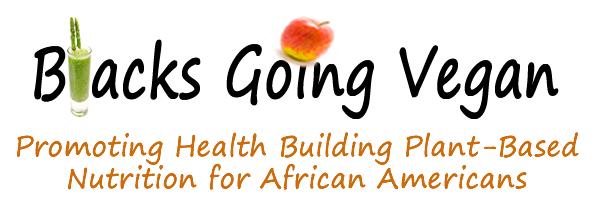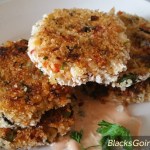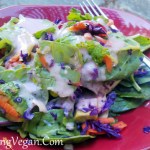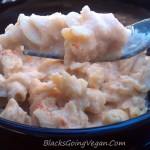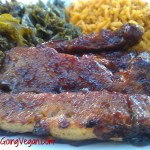Leaving Meat Behind to Become Vegan
Eliminating animal use from your life can seem quite straightforward at times, while at others it may seem challenging. For instance, opting out of animal use in entertainment is as simple as not supporting activities that use animals (zoos, circuses, rodeos, etc.). However, once you start looking at food and clothing labels, it can be surprising how many of them use some sort of animal product.
Contemplating the Transition to Vegan
When it comes to clothing, new vegans may find it challenging to replace dress clothes and coats with vegan alternatives, particularly because wool and leather are so frequently used. But, because animal products are not necessary to human health–nor are they generally required to conform to any corporate dress code — there’s no justification for not making the extra effort that may sometimes be involved to source vegan belts, shoes, ties, purses and so forth, much of which can be found online. Locally, used clothing stores and thrift shops tend to carry large quantities of plant-based clothing and synthetics, including cotton shirts, faux leather belts and shoes, wool-free suits, and so on.
Some people, compelled as they are to eliminate their use of animals for clothing and entertainment, may still be somewhat concerned about remaining healthy without any animal products in their diet.
Fear not! Anyone can eat a plant-only diet.
The American Dietetic Association stated in 2009 that appropriately planned vegan diets are “healthful, nutritionally adequate, and may provide health benefits in the prevention and treatment of certain diseases.” You don’t need to live in a larger city with natural food stores and vegan restaurants to be vegan. Vegan foods are merely foods from plants, and those can be found everywhere.
Though plant foods already make up part of your diet, switching to a plant-only diet will likely involve an adjustment to the way you typically plan a meal. It’s not as much work as it might sound. Because you can find all the foods you need for a healthy vegan diet at any grocery store, and because many of the basic ingredients you’ll need already reside in your kitchen, cooking vegan can simply be a matter of developing a new repertoire of recipes.
Search the web and you’ll find a wide variety of vegan cooking blogs and recipe sites. Vegan cookbooks can be found at the library or for purchase at your neighborhood bookstore, with many more available for sale online. Put these tools to work, and you’ll soon be putting together satisfying, balanced meals.
Making the Transition Happen
Some people become vegan with no delay. It is quite understandable that, upon recognizing that using animals conflicts with one’s beliefs, one would want to immediately stop using and consuming animals and their products. When taking this step, make sure to do so responsibly. You don’t want to leap in without first looking, and then give up because you don’t like the way it’s going or the way you feel.
Get together some recipes that look satisfying, delicious, and fairly easy to prepare. Plan for the shift in where your calories will come from so that you are still consuming the proper amount per day for you. Be mindful of how to source various key nutrients while eating a plant-only diet. We invite you to learn more about vegan nutrition using this online introduction.
For those who simply cannot bring themselves to become vegan immediately for whatever reason, but who want to start moving in that direction in a responsible way (in terms of doing the research and making the proper dietary adjustments at a pace you can manage), below are some alternative approaches to transitioning. These approaches are provided in recognition that some people will have psychological barriers to becoming vegan all at once.
Bear in mind that these should be thought of merely as potential paths toward becoming vegan as quickly as possible. Make a concrete plan and keep your eye on the goal. Anything short of being vegan is inadequate to reconcile one’s behavior with the belief that it is wrong to harm animals unnecessarily.
Start Small and Ease Into It
Try starting with a vegan breakfast every day.
Enjoy cold cereal every morning? Try simply switching to a brand and flavor of non-dairy beverage that appeals to you and check the ingredients on cereal boxes to be sure you’re avoiding those varieties which contain ingredients from animals. Have a banana or an orange with that, or a small glass of juice.
Oatmeal with walnuts and fruit makes for a good start to the day, with lots of protein, fiber, and even essential omega-3s. For an even bigger omega boost, see if you can find some flax seeds to grind up and toss in as well.
If you drink coffee with creamer, use the non-dairy beverage instead (some stores even carry soy creamers, though this is not as widely available yet). Switch to an unrefined sweetener, as white sugar is typically refined through charred animal bones. Better yet, try Pero, a roasted barley chickory and rye beverage that is a healthier alternative to coffee.
One advantage to this approach is that you’ve already switched a third of your meals to plant-only, and with minimal effort. From there, move up to another meal, and then the next. Before you know it, you’ll be eating a plant-only diet!
Note that this is just an example. You could start with lunch or dinner instead.
This starts you out a little slower, first eating all-vegan meals one day a week in week one, then two full days per week in week two, and so on. The transition would take seven weeks at this rate.
One pitfall with this variation is that you may find yourself constantly comparing plant foods with animal products instead of giving yourself the chance to re-conceive an entire meal category in vegan terms all at once. For example, if you have a tofu scramble one day and an egg scramble the next, you’ll be inviting unhelpful comparisons between two very different foods, and this may provide unwelcome mental obstacles to your vegan transition.
One Plant-Only Day Per Week Method
Meatless Monday has raised awareness throughout the country that eating vegan can be both healthful and tasty. Check the website at this link for more information and ideas on transitioning to veganism one day per week. Meatless Monday also has an active Pinterest page with lots of great recipes you can try.
Another method is to eat vegan during the day, eating animal protein at dinner on dates or with the family. Others eat vegan during the work week, and eat animal products on weekends. Whatever works for you, we’re behind it!
You may find it helpful to mix and match these approaches. Week 1 could involve switching right away to all-vegan breakfasts, getting you a third of the way there, and then switching all your lunches to vegan in Week 2. Meanwhile you could be adding one new vegan dinner to your menu every week for seven weeks, until all your meals and snacks come solely from plants.
However you choose to transition, remember that the goal is do so as quickly as you can manage, in a way that keeps you focused on the fact that all animal use is wrong, and in a way that leads you to being vegan and sticking with it for good.
Category: Veganism and African Americans
